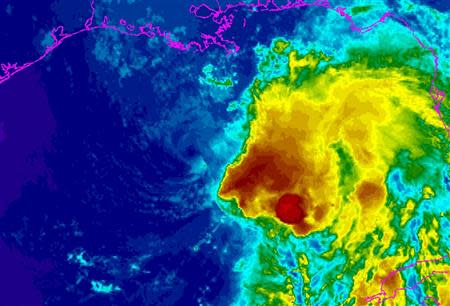Hobbled Tropical Storm Karen hovers off U.S. Gulf Coast
By Kathy Finn NEW ORLEANS (Reuters) - A severely weakened Tropical Storm Karen crept toward the Louisiana coast on Saturday after earlier fears it would reach hurricane strength prompted the evacuation of some coastal areas and disrupted U.S. energy output in the Gulf of Mexico. Karen's top sustained were holding at 40 mph late Saturday afternoon. But that was down from 65 mph on Thursday and 50 mph on Friday, and National Hurricane Center forecasters in Miami said data from an Air Force reconnaissance plane showed Karen could soon lose its status as a tropical storm. "The only tropical storm winds that the Air Force was able to find this afternoon were limited to a very small area," said David Zelinsky, a meteorologist at the Miami-based hurricane center. He said dry air and wind shear continued to tear the storm apart. Karen was originally forecast to become a hurricane, and authorities issued mandatory evacuation orders for low-lying areas south of New Orleans on Friday. Chevron Corp said on Saturday it was sending workers back out to oil platforms in the U.S. Gulf of Mexico, a sign the worst of the storm had already passed deepwater areas of the basin. They had been evacuated earlier this week. All tropical storm watches issued due to Karen were lifted on Saturday afternoon but a storm warning was still in effect for Grand Isle, Louisiana, to the mouth of the Pearl River, between Mississippi and Louisiana. Tropical storms carry winds of 39 mph to 73 mph. The governors of Louisiana, Mississippi, Florida and Alabama had earlier declared states of emergency to speed storm preparations and the Federal Emergency Management Agency recalled some workers who were furloughed in the federal government shutdown to assist. Nearly two-thirds of oil output in the U.S. Gulf of Mexico was halted as Karen neared the Louisiana coast earlier this week, prompting oil and gas companies to shut platforms and evacuate workers in preparation for the storm. The Gulf accounts for about 19 percent of U.S. oil production and 6 percent of natural gas output. By late Saturday, the slow-moving storm was centered about 170 miles southwest of the mouth of the Mississippi River. Zelinsky said Karen's projected path was likely to take its center over the southeast corner of Louisiana early on Sunday and then across the coasts of Mississippi, Alabama and the Florida Panhandle. The storm could dump up to 6 inches of rain in some areas and push a surge of seawater over the shoreline, the hurricane center said. (Additional reporting by Terry Wade in Houston, Greg McCune in Chicago and David Adams in Miami; Writing by Tom Brown; Editing by Mohammad Zargham)




